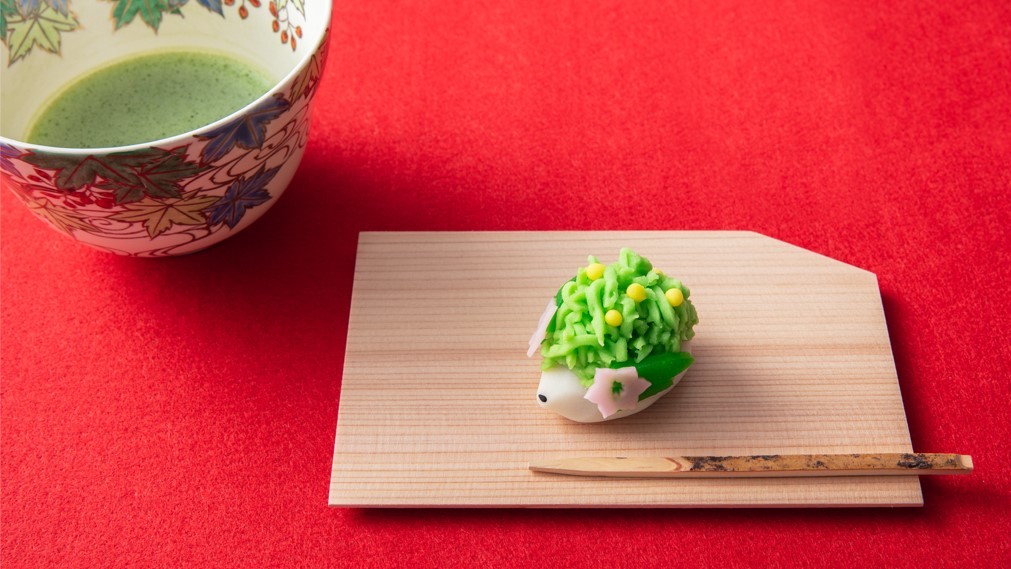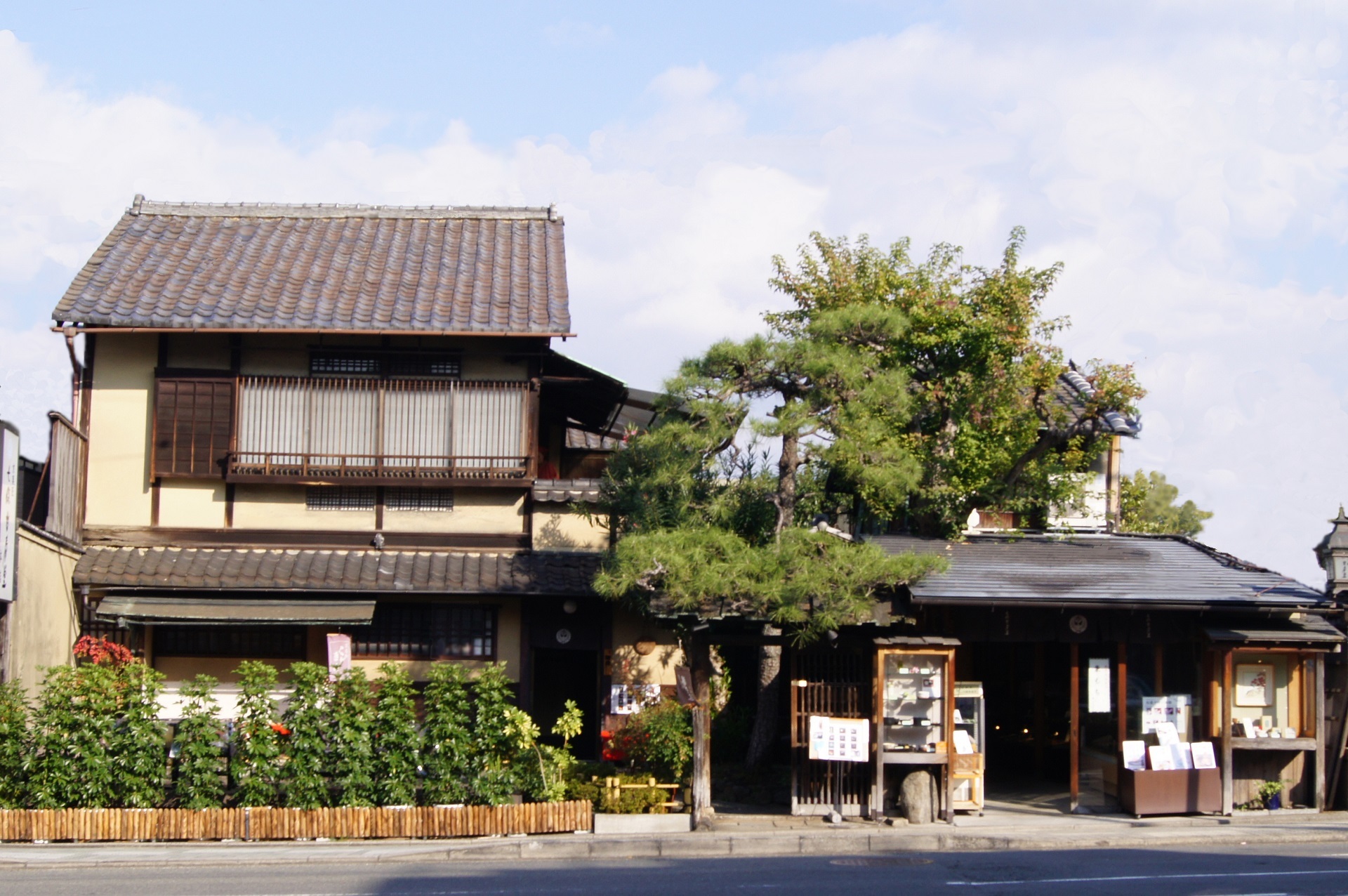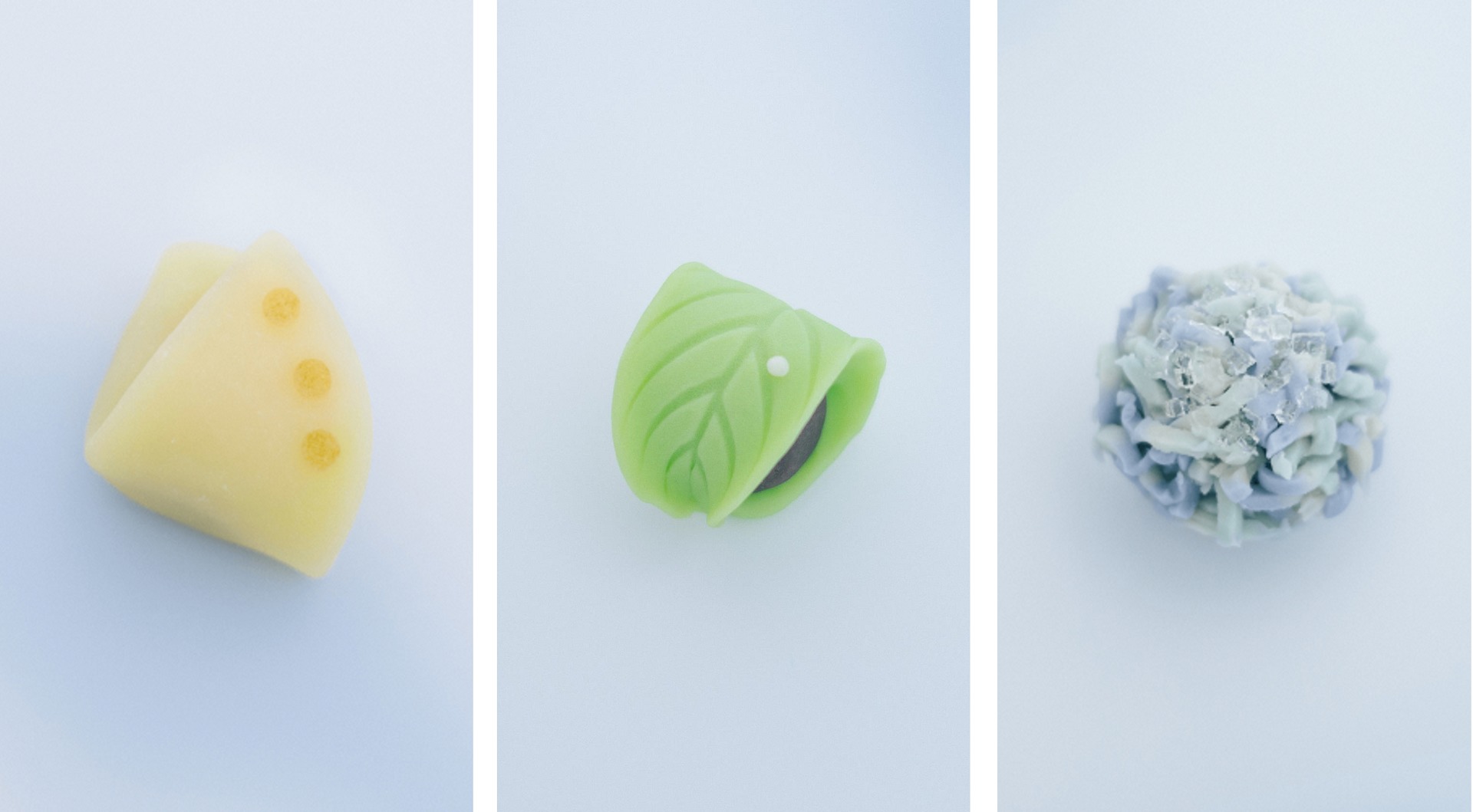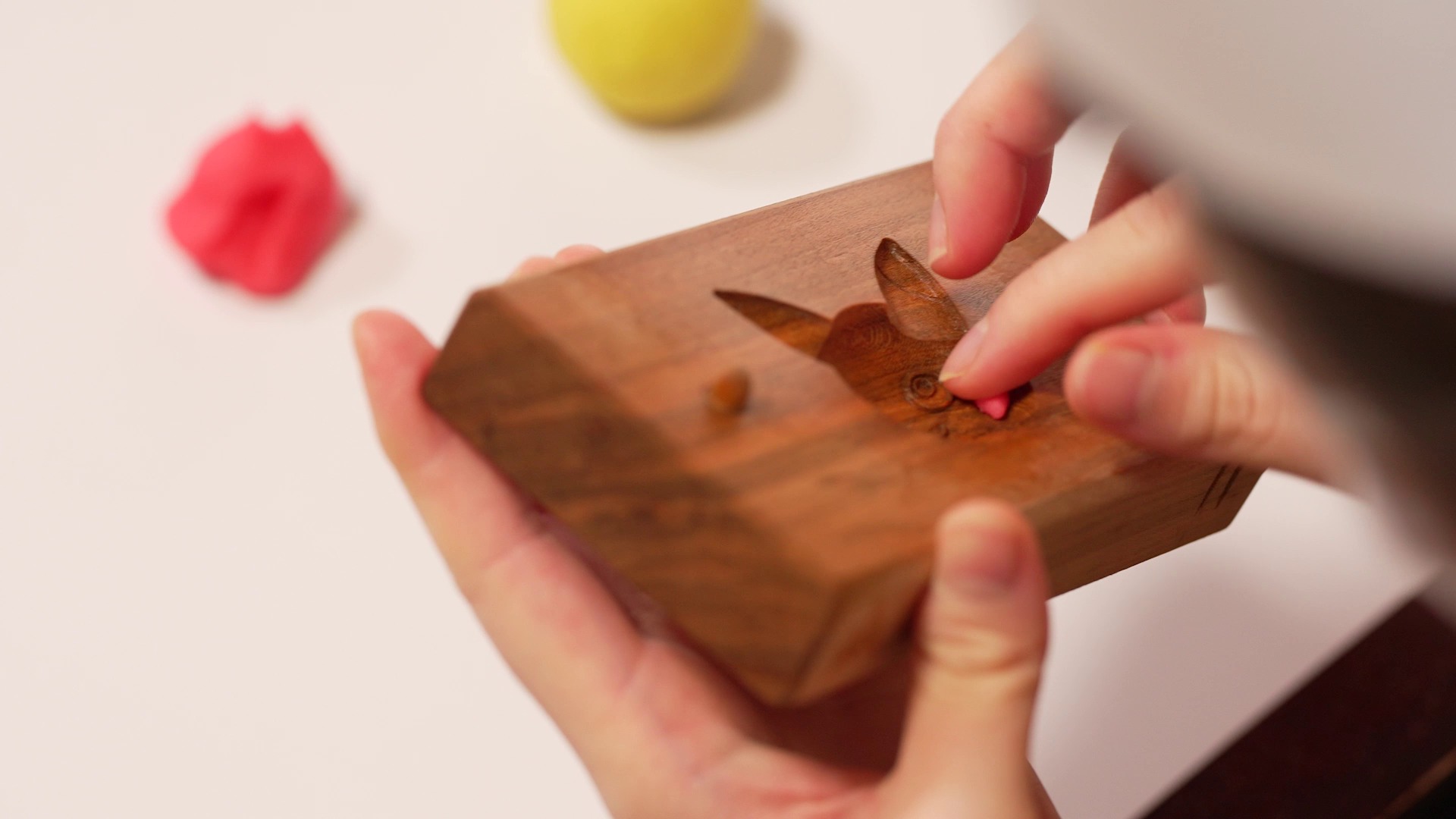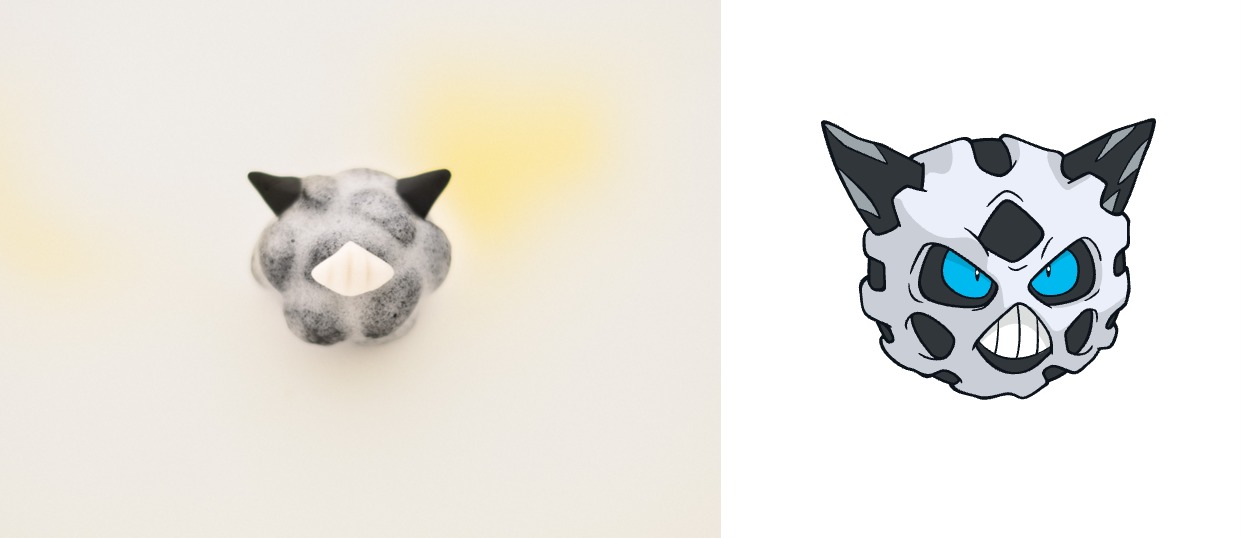The Pokémon Company has teamed up with Shichijo Kanshundo, a venerated maker of wagashi – traditional Japanese sweets – founded in Kyoto in 1865, to create a cornucopia of Pokémon-themed “kyogashi” sweets aligned with the four seasons.
“Kyogashi” – literally, “Kyoto-style sweets” – originally developed as part of this ancient capital’s unique culture. As an integral feature of Imperial court ceremonies and tea ceremony culture, kyogashi come in three basic types with different textures, depending on their water content. Jo-namagashi typically are soft and filled with sweet bean paste; han-namagashi have a jellied texture and a long shelf life; higashi, made from starch and sugar, are dry in a way similar to biscuits. A defining element of all kyogashi is their inherent connection with the seasons or annual events. For well over a millennium, kyogashi have given pleasure both to the palate and the eye, conjuring up thoughts and images of the season they represent.
Pokémon too are sometimes associated with specific seasons. So the idea arose that, if The Pokémon Company and Shichijo Kanshundo were to collaborate and produce Pokémon-themed sweets for the changing seasons, amazing synergy – and both cute and delicious new kyogashi – could be created. Thus began the joint effort to develop and commercialize “Pokémon Kyogashi.”
Shichijo Kanshundo’s main shop in Kyoto’s Higashiyama-ku
Many of Shichijo Kanshundo’s staff involved in the development project are young enough to know and love Pokémon from their childhood. One participant had even collected every Pokémon in the video game series, completing a whole Pokédex!
Among the project members from the Shichijo Kanshundo side, one spoke of how excited they all were pondering the new value Pokémon would add to traditional Japanese sweets. “Until not very long ago, sweets in Japan were mostly wagashi. Then, as the country modernized, the variety of confections available began expanding substantially, and many delicious Western-style products came on the market. Unfortunately, today more and more young people know very little about wagashi, and at Shichijo Kanshundo in recent years we have been worried and saddened by this trend, so we felt a strong need to add new value to wagashi. So collaboration with Pokémon is perfect, and perfectly timed too.”
To ensure that the imaginative ideas and uncompromising standards of both sides would be fully reflected in developing Pokémon Kyogashi, The Pokémon Company and Shichijo Kanshundo engaged in healthy communication and continually produced trial products. On our part, we proposed featuring Pokémon in harmony with seasonal associations and offered our ideas on how to express them in kyogashi. Shichijo Kanshundo contributed by pursuing the technical possibilities, considering the different sweet types, balance between taste and color, choice of ingredients, and so on.
For example, normally when creating traditional jo-namagashi, motifs of the season or a relevant seasonal event are often described only abstractly, leaving much to the imagination and imbuing the sweet with a sense of refined elegance.
Examples of jo-namagashi made by Shichijo Kanshundo (from left: butterfly, leaf-rolling weevil, hydrangea)
But in designing jo-namagashi for the project, if the design were too abstract, the Pokémon image might be lost. So it was vital to achieve a fine balance between the image-suggesting abstraction of kyogashi and the need to immediately recognize the Pokémon being depicted.
Jo-namagashi are individually crafted by specially skilled artisans, so each item is ever so slightly different. They are also typically affected by the ambient temperature and environment, two factors that can easily impact the finished item’s colors. This posed a challenge in how to reproduce the coloring of the featured Pokémon while maintaining the quality inherent in jo-namagashi. After hours and hours of discussion, suggestions of ideas, and continual trials, these hurdles were ultimately and brilliantly overcome.
Oricorio (Sensu Style), a Dancing Pokémon (right), as depicted in kyogashi (left)
Because Pokémon and kyogashi have very specific worldviews that don’t readily allow for compromises, joint product development was at times quite challenging, and there were occasions when we worried that perhaps we were requesting Shichijo Kanshundo to make minor adjustments and refinements too often. But the response we received from Shichijo Kanshundo – that its confection creators were enjoying the development process – set our minds at ease. Our insistence on being faithful to the world of Pokémon was favorably and positively met.
In kyogashi culture, items are frequently made to order for each specific tea gathering. In this context, the artisans at Shichijo Kanshundo looked upon the joint development of new products as a chance to show their utmost capabilities. What’s more, some members of the development team said they were thrilled at the prospect of showing their artistic prowess off to their Pokémon-loving grandchildren. In the end, their pride and joy enabled this cooperative project to go forward smoothly and winningly for everyone concerned.
Jo-namagashi are individually crafted by hand using wooden molds.
Out of this painstaking, yet surprisingly enjoyable, process, the path was set toward introducing Pokémon Kyogashi tailored to each of the four seasons. The initial series focused on autumn. In Japan, there’s an ancient tradition of gathering together and holding moon-viewing parties to celebrate the especially bright full moon of mid-autumn. So here the obvious Pokémon Kyogashi to create was Clefairy. Clefairy tend to be elusive except on nights of a full moon, when they gather in large numbers and dance. Other kyogashi developed for the series include rice crackers depicting Pokémon in autumnal backdrops and a sugar-based Pikachu suggestive of the fall season.
The Pokémon Kyogashi of Clefairy
The second series focused on winter, and one creation here was especially memorable from our perspective at Pokémon. In winter Japan celebrates Setsubun, a festival marked by bean throwing to drive away evil spirits. For Pokémon Kyogashi of this season, among the candidates was Glalie. Here, Shichijo Kanshundo suggested that black beans be used to recreate Glalie’s bold facial features. This was a brilliant and completely fitting idea that we ourselves would not likely have hit upon. It owed entirely to the collaborative aspect of this project and resulted in a truly unique Pokémon Kyogashi.
Glalie kyogashi are fashioned from egg white, agar-agar and black beans.
Every Pokémon Kyogashi item is meticulously created to offer both visual and, of course, tasty pleasure. We also think it’s important to convey the meaning and background behind each creation, so Pokémon Kyogashi are sold together with a brief printed insert describing the relevant seasonal event associated with each item. Conveying how intimately connected kyogashi are with the seasons and seasonal events, and thus with people’s lives, was one of the aims we embraced for this project. We hope this knowledge will add to the pleasure derived from all Pokémon Kyogashi.
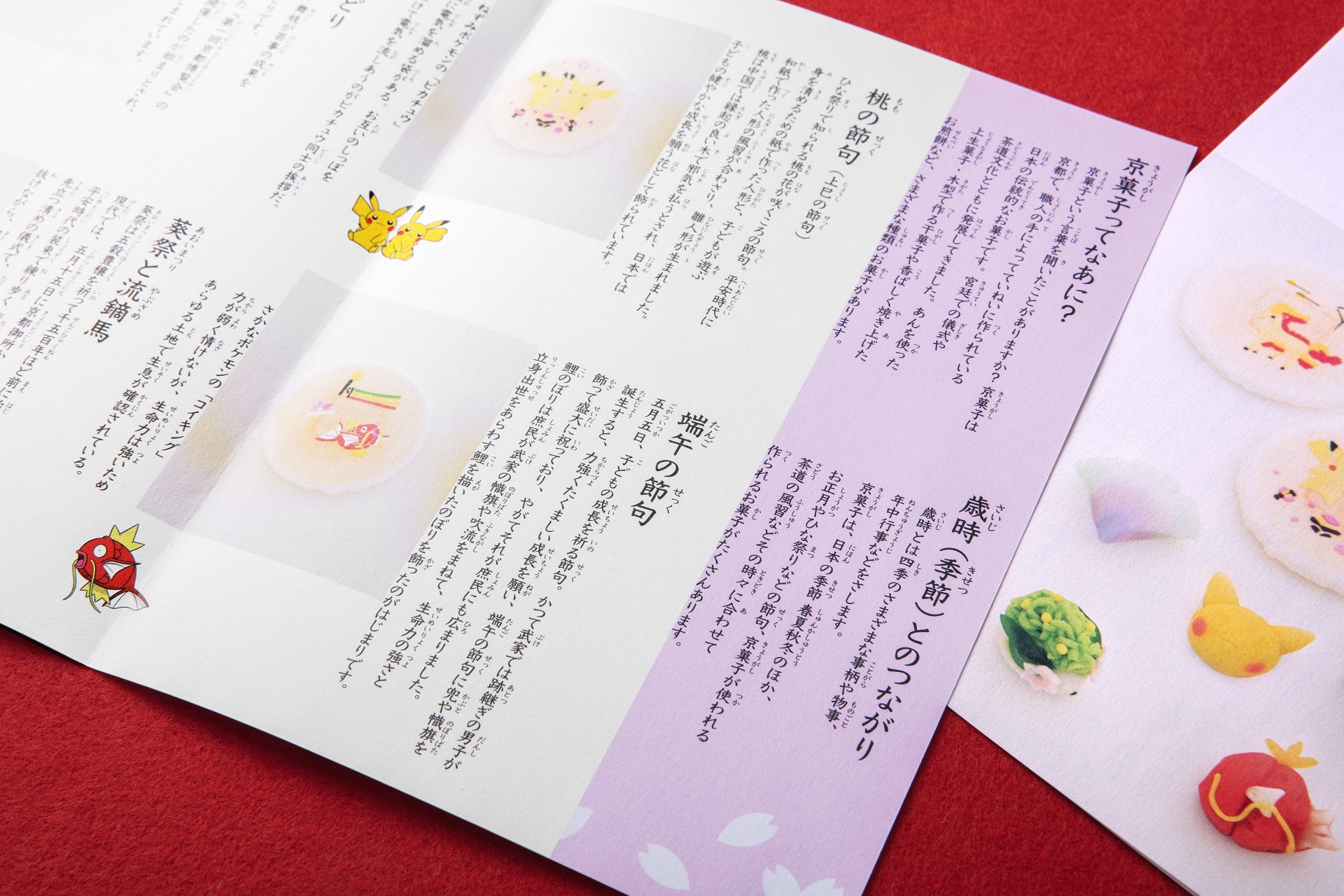
On the day Pokémon Kyogashi first went on sale, a long line formed outside Shichijo Kanshundo: young Pokémon fans accompanied by their family members, elders eager to purchase for their grandchildren, and many foreign tourists as well. The eager excitement in the air and on their faces was pleasing proof that Pokémon Kyogashi will bring happiness and joy well beyond our imagination to many different people everywhere.

